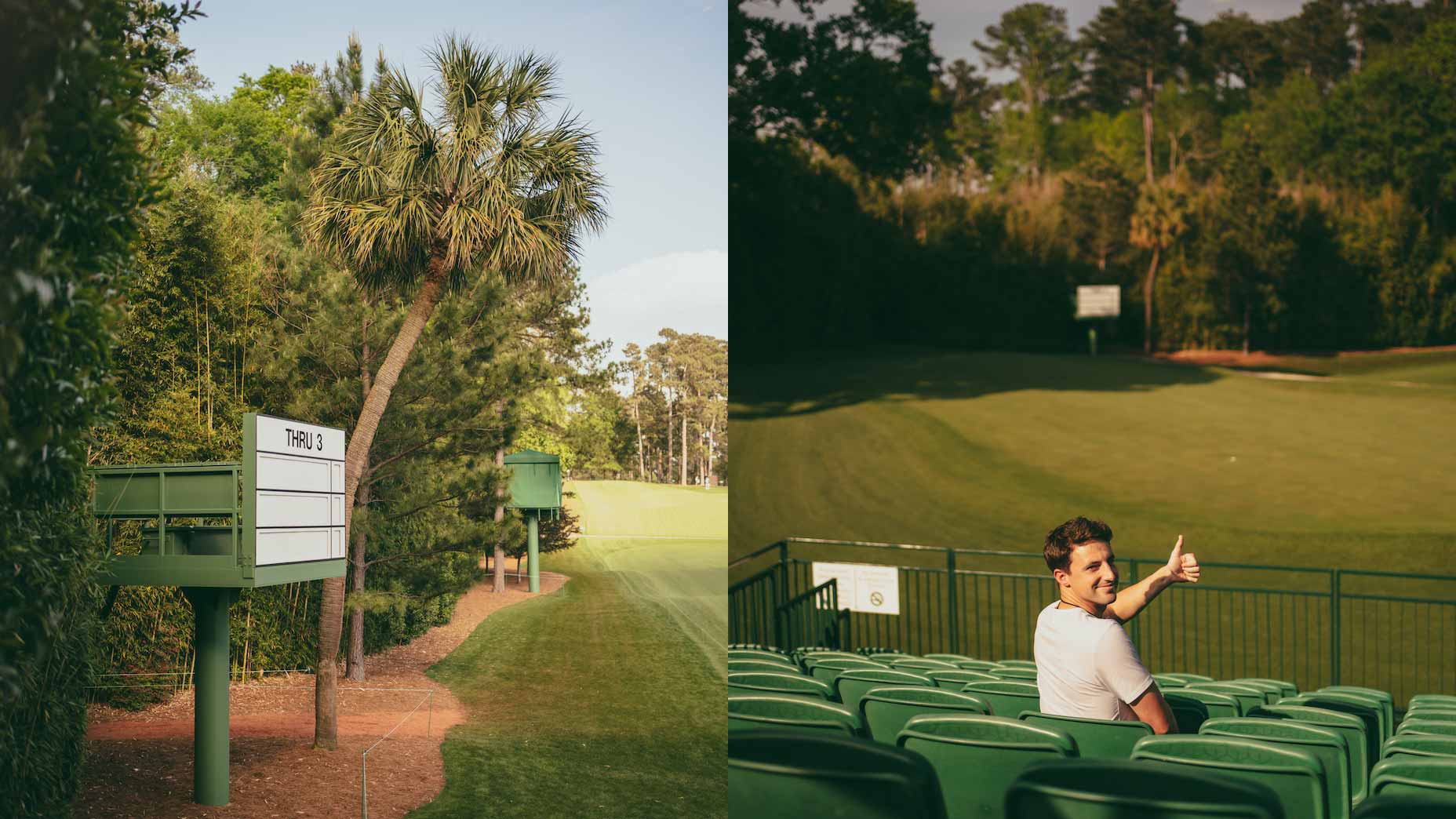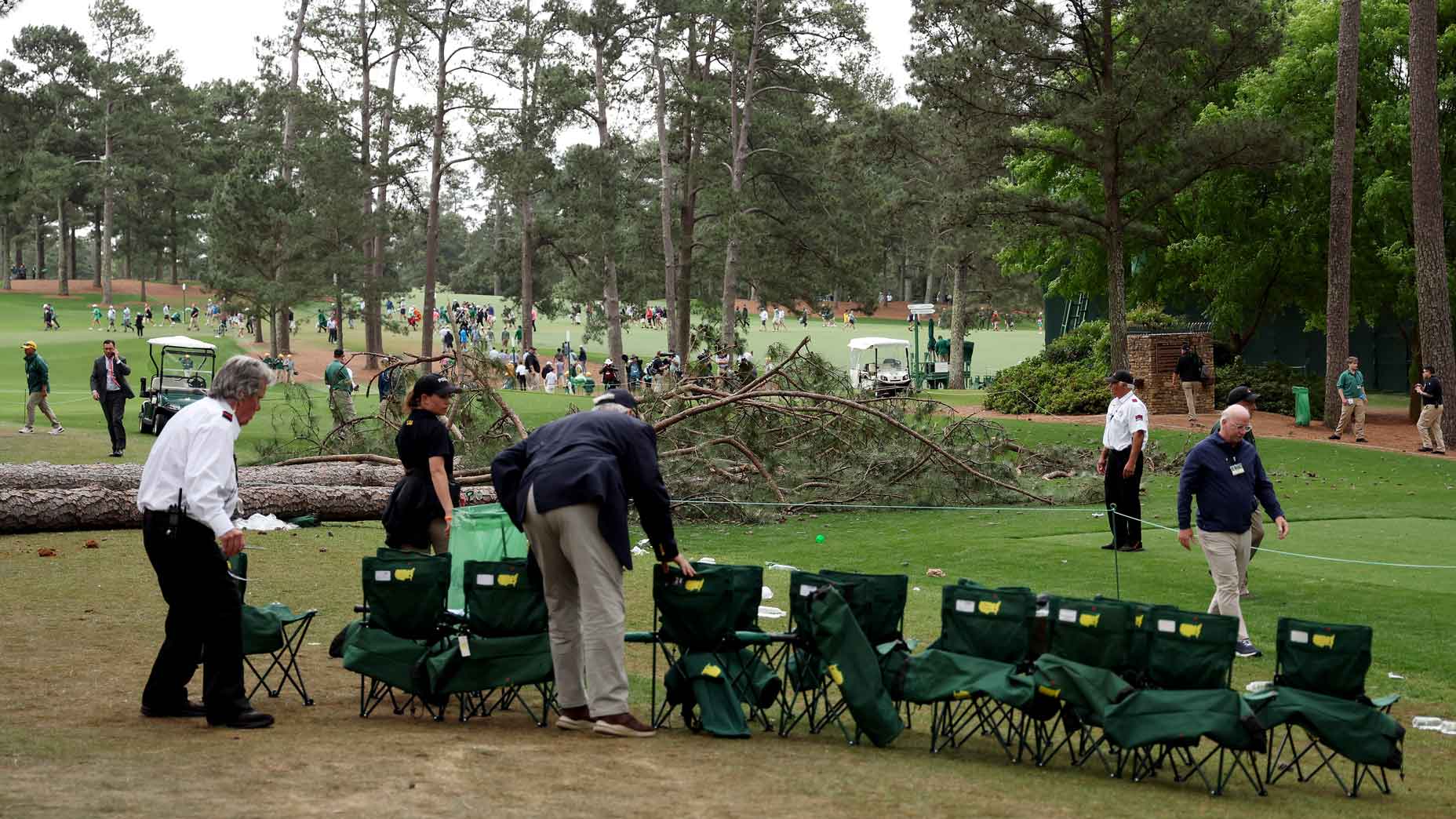
The lone palm at Augusta National is down the right side of No. 4.
Darren Riehl
AUGUSTA, Ga. — I would say that it’s an incredible coincidence that we were prepping a story about an Augusta National tree just as several other Augusta National trees suddenly became the story.
But at Augusta, the trees are always the story. They frame holes. They shade patrons. The roars echo through them. Important social gatherings happen under the giant oak by the clubhouse. Important recovery missions happen from the towering trunks lining every fairway. The trees define the property.
Think of how many recent iconic Augusta moments — Bubba’s hooking wedge, Phil’s pine-straw miracle, Rory’s disaster by the cabins — have featured the trees as central characters. Those Georgia pines are everywhere.
Sure, they don’t always fall during play, miraculously missing patrons like James Bond running from a collapsing building. But these trees have been around longer than Scottie Scheffler, longer than Tiger Woods. Some have been around longer than Augusta National itself.
Which brings us to Augusta’s lone palm.
If you make your way to the western border of Augusta National’s property, you’ll find the lengthy par-3 4th. And if you make your way down the right side of the hole, you’ll pass a stand of bamboo. And then, if you look directly up, you’ll see a palm tree.
Before Augusta National was a golf course it was a nursery. Fruitland Nurseries was owned by the Berckmans family. And when the course opened, Louis Berckmans became a member. He helped club founders Bobby Jones and Clifford Roberts name the holes — one plant or tree per hole.
No. 4 was originally called “Palm” because there were a bunch of palm trees down the right side, likely planted around the time the course opened. But there was a winter storm and most of ‘em died off. As a result, the hole got renamed “Flowering Crab Apple,” which feels like a step in the wrong direction in both brevity and appeal.
But one palm tree survived.
Most of the time it stood guard, observing the action from the sidelines. But every now and then it got involved in the action, too, like in 1964, when Tommy Jacobs hit his tee shot into the tree and made his caddy shimmy up to identify so he could take an unplayable. The Augusta Chronicle ran a photo the next day with a pointed caption: “Tommy Jacobs really gets a ‘high lie’ on this hole.”
Over the years, the bamboo grew up around the tree, threatening to hide it away. (Yeah, there’s bamboo here, too — the Masters itself estimates that since the course was built, more than 80,000 plants and 350 varieties have been added.)
But ahead of the 2019 Masters, the 5th hole was lengthened. Augusta National Chairman Fred Ridley announced that they would add spectator access “down the right side of the fourth hole, as well as behind the green, providing an attractive vantage point for this challenging par-3.”
That includes an attractive vantage point of the palm, too. They beat back the bamboo, opening the tree to admirers and passersby.
On Wednesday ahead of this year’s event, I headed to the course for a walk around the property with GOLF’s staff photographer Darren Riehl.
We swam upstream against the hordes of merch-toting patrons as they headed for the exits. That’s no slight at them — it’d been a long day in the blazing sun. We passed on the end of the Par-3 contest, turning right instead, breaking through the last of the crowds and onto the big course itself, where we were greeted with some of the happiest people on earth.
One large group sat beside the 1st fairway, picnic-style, balancing beers and sandwiches and contented smiles. A trio paused as they crossed the 9th fairway, looking back up the hill toward the tee and then forward up the hill toward the green. We ended up walking up No. 3 and down to No. 4, where we took some photos for that fun video you’ll find above and then plopped down in the bleachers to take in the moment.
It’s just a palm tree, of course. But it’s a nod to Augusta’s connection with its past. It’s a nod to the American Southeast. And it’s a reminder that there are secrets in every corner of this strange, secret place.








